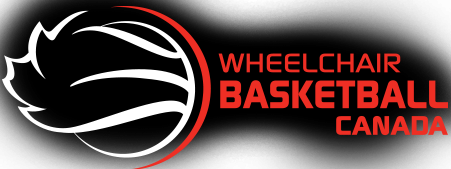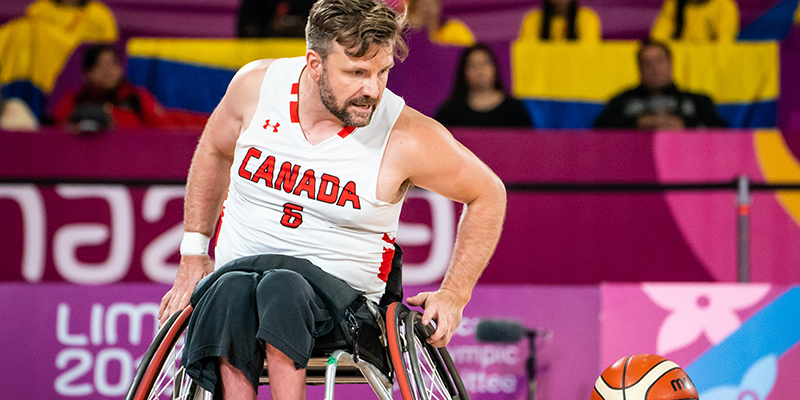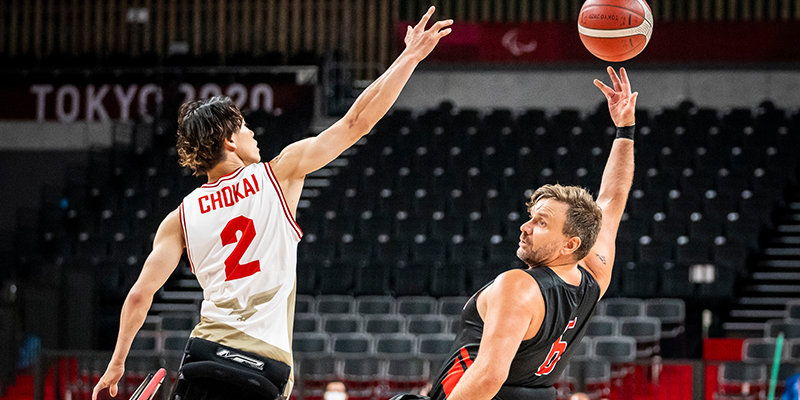Team Canada captain Bo Hedges writes about his journey in Wheelchair Basketball – from his injury to discovering the sport
Growing up on a cattle ranch near Wonowon, B.C., was lots of fun. We were isolated, but we always had neighbours three or four kilometers away. They come and help when needed, it was a free but supportive environment to grow up in, and I’ve always felt that support since moving on and challenging with the national team.
When I first started helping on the ranch, I was pretty young. Dad would be doing chores, feeding cows, and I usually rode in the tractor with him or out in the field with him picking rocks after working in the field.
I started driving the tractor probably when I was nine or 10 years old moving things around, riding horses, and chasing horses. By the time I was 12, I was already putting in a full day’s work most days.
We’d go to school in Wonowon during the day, so I’d do some chores in the morning and then come home and do some chores at night. I didn’t really look at it as work, it was fun, and I was doing something that I liked. The whole family was doing it, and everyone was involved, so I never really viewed it as work; maybe picking rocks was work, but everything else was just farm life.
Before my injury, I mainly played hockey. We had a rural community hockey team. All the farm kids would play together in the different areas and against farm kids in the other regions around Fort St. John and north of the city.
The injury
I was 13 at the time, and it happened when we were on a family vacation in Southern Ontario. Originally my mom and dad grew up near Lake Erie in the Port Dover area, and they moved out in the late 70s to Northern B.C.
School had ended for the summer after my Grade 7 year, and then we were out visiting family. We were at my grandparents’ old farm right along Lake Erie. I was climbing a tree with my younger brother Matt, and I fell out of the tree. I fell about 10 feet, not super far, but landed on a stump on my back, which shattered my spine.
As a kid, climbing around, I’d done a lot more things that were probably more dangerous: helping build barns or riding horses on steep hills – lots of things that could’ve gone poorly when I look back, but I was just doing my thing and this time the stump on the ground – wrong place, wrong time and that’s what injured me.
The one fortunate thing about the accident is where I was: I was at the Hamilton-McMaster University hospital within an hour and got world-class treatment for my back injury versus if I was at the ranch, it’s an hour to town, and then they would’ve transported me to Vancouver or Edmonton, and there was all that potential for more damage to happen.
The official diagnosis was a spinal cord injury – T12 break – I fractured the T12 and the L1 vertebrae. They were completely dislodged from the spine and partially severed the spinal cord in that area. I also broke my right shoulder blade and broke a few ribs in the fall.
The recovery
I did the first little bit of recovery in Ontario and then did my rehabilitation in Vancouver at GF Strong Rehabilitation Centre and was there for a few months in the summer and fall of 1993.
Once I got to Vancouver and started rehab, it felt really intense. I couldn’t even put my socks on. I was figuring out how to move my legs around and get my strength up. I would go to rehab with the physio to start building strength for the first while just to get moving: get in the chair, be able to push myself, and start doing transfers.
Once I got to a certain point, they started introducing me to different sports just to start moving around, so I could start working on my coordination in the chair and trying to make sure that I was staying active.
It played a huge role in my physical ability but also in my recovery. I tried race walking, full leg braces, and crutches – it was really hard. I didn’t have a lot of mobility or strength through my core and nothing in my legs, obviously, so it was a pretty slow go. Moving around in a chair is much more efficient. So I didn’t really pursue race walking for too long.
Finding Wheelchair Basketball
Wheelchair Basketball was introduced to me during rehab.
The provincial and national team coach, Joe Higgins, came in. He was working with a wheelchair provider as well as coaching. He saw me; we did a few drills, he met me and got to know me a little bit. He actually came up and did a camp in Fort St. John in 1995, a couple of years after my accident. He got some people from Prince George and Grand Prairie to come up, and I did my first real Wheelchair Basketball camp up north there.
Joe played a pretty big role in terms of that push for the basketball side. Pat Harris was the other one – he was the Spinal Cord Injury BC representative for the north. So he’d come up to the ranch, did a couple of house visits, and talk to me about how to do things.
Ed Arnston was a wheelchair guy in Fort St. John who played a little bit in the Okanagan. He came out and did a little bit of coaching, and then Ray Archambault was in town, and Tom Garcia – they played a big role in just coming out and playing, helping me, and figuring things out. So those 4-5 guys really were the backbone of what got me moving to where I am now.
Wheelchair Basketball was one of the more developed sports. You could get equipment fairly easily and play with your friends; it was a big draw that way.
We had a team here in Fort St. John; Ed was coaching us, Tom Garcia, Ray Archambault, myself in chairs and then two or three of my brothers would come out, maybe a couple of cousins, a couple of buddies from high school, and Tom and Ray would have a couple of family members – we’d have 10 people out. Playing together, just playing and having fun.
That was the big thing back then for me was to be able to do something that was a little bit more what used to be normal.
Growing up in rural Canada, playing hockey, you always dream of maybe playing in the NHL, but you’re like, ‘Nah, I’m playing on a pond here with a bunch of farm kids, chances are pretty low that I’m going to the NHL.’
Then I found Wheelchair Basketball, and I was like, there’s another opportunity here to play competitive team sports. It gave me a chance to travel a little bit, see different people. That was pretty exciting for me.
Advice for beginners
The best advice I can give someone considering Wheelchair Basketball is to try it and have fun. Don’t be scared of the contact; just get out there, start running into a few people and embrace that.
Whether you want to play competitively or not, it’s a great sport for the mind in terms of playing with friends and making friends, and it’s a great community, a very supportive community.
Just try it, have fun with it and see where it goes.




